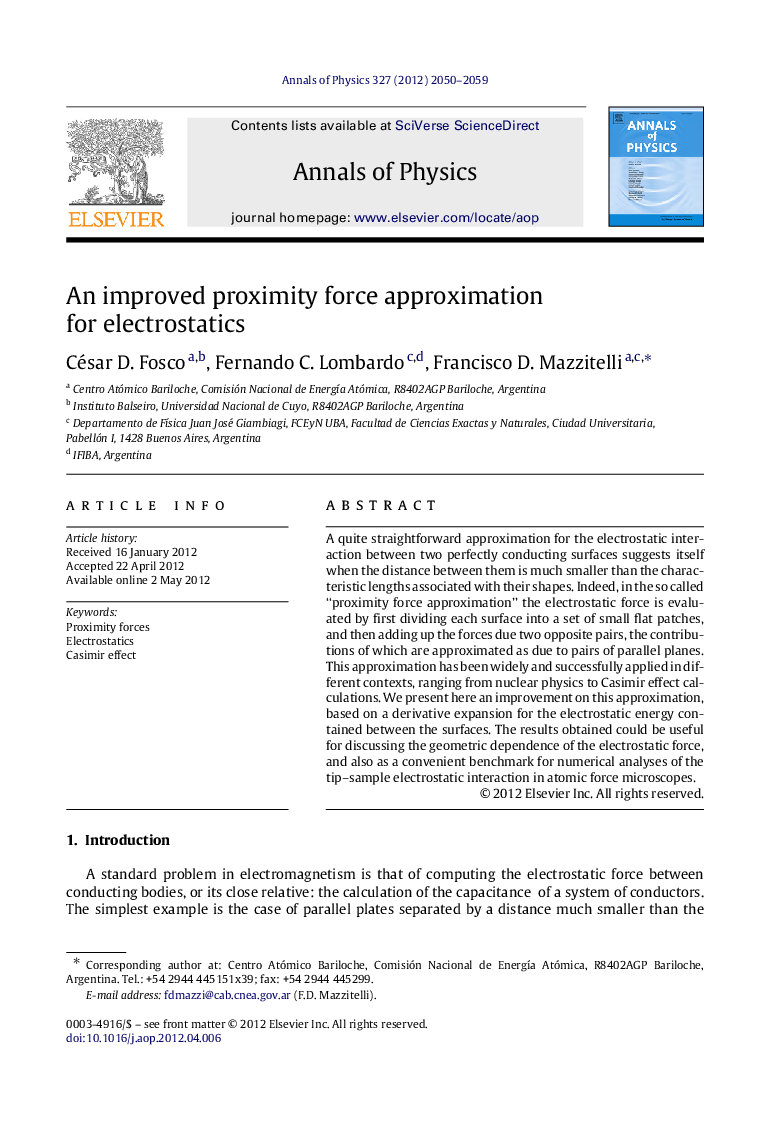| Article ID | Journal | Published Year | Pages | File Type |
|---|---|---|---|---|
| 1857468 | Annals of Physics | 2012 | 10 Pages |
A quite straightforward approximation for the electrostatic interaction between two perfectly conducting surfaces suggests itself when the distance between them is much smaller than the characteristic lengths associated with their shapes. Indeed, in the so called “proximity force approximation” the electrostatic force is evaluated by first dividing each surface into a set of small flat patches, and then adding up the forces due two opposite pairs, the contributions of which are approximated as due to pairs of parallel planes. This approximation has been widely and successfully applied in different contexts, ranging from nuclear physics to Casimir effect calculations. We present here an improvement on this approximation, based on a derivative expansion for the electrostatic energy contained between the surfaces. The results obtained could be useful for discussing the geometric dependence of the electrostatic force, and also as a convenient benchmark for numerical analyses of the tip–sample electrostatic interaction in atomic force microscopes.
► The proximity force approximation (PFA) has been widely used in different areas. ► The PFA can be improved using a derivative expansion in the shape of the surfaces. ► We use the improved PFA to compute electrostatic forces between conductors. ► The results can be used as an analytic benchmark for numerical calculations in AFM. ► Insight is provided for people who use the PFA to compute nuclear and Casimir forces.
